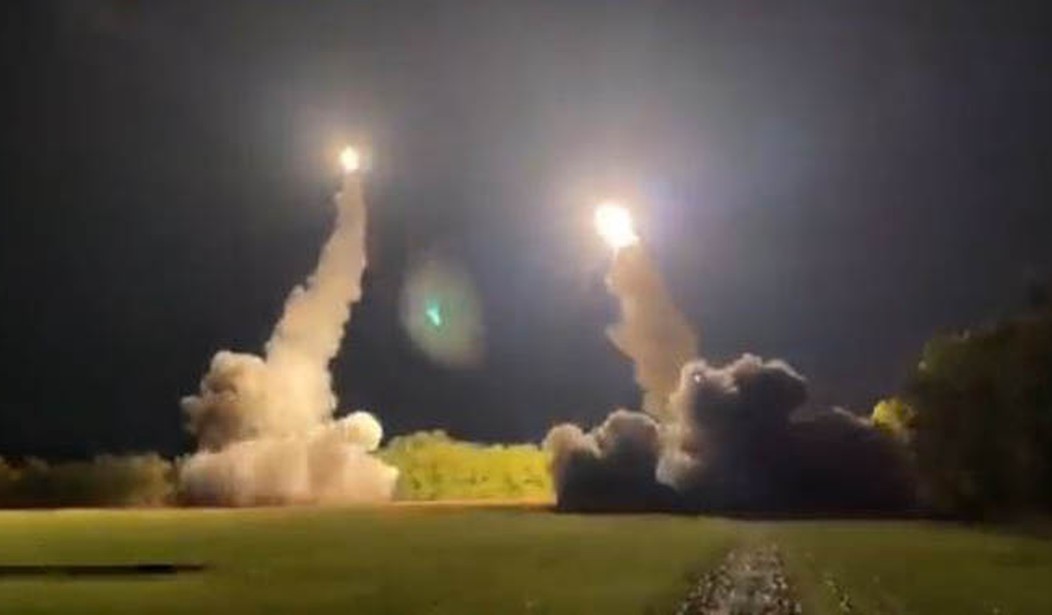Since the beginning of the war, Ukraine has been given weapons by the US and other western nations but it has also been restricted in its use of those weapons. Specifically, Ukraine was not allowed to fire those weapons into Russian territory for fear of escalating the conflict.
Even now, as Ukraine has penetrated several miles into Russia's Kursk region, restrictions on "deep strikes" still limit what they can target. But Ukraine has launched scores of drone attacks on Russian territory.
Ukraine has been stepping up its long-range strikes inside Russia over the past few months, launching scores of drones simultaneously at strategic targets several times a week.
The targets include air force bases, oil and ammunition depots and command centres.
Ukrainian firms are now producing hundreds of armed one-way attack drones a month, at a fraction of the cost it takes to produce a similar drone in the West.
Most of the drones, which are being manufactured in a former furniture factory, get show down before reaching a target. Still, they are having an impact.
Ukraine’s deep strikes against Russian military targets and its three-week-old ground offensive inside Russian territory have appeared to be yielding military and political results during the past week.
Russia was reported to be moving its aircraft back from airfields near the Ukrainian border while glide bomb attacks inside Ukraine were reported to have decreased. Evidence that Moscow was scrambling elite units from Ukraine to defend home turf also mounted during the week.
An unnamed White House official told the Politico news website that “90 percent of the planes that launch glide bombs” against Ukrainian front-line positions had been moved back inside Russia.
But what Ukraine has been saying for months is that it could fight far more effectively if restrictions on the use of US weapons were relaxed. CNN reported yesterday that senior Ukrainian officials were in Washington this week to present the Biden administration with a list of specific targets they would like to hit. But doing so would require a change of policy on deep strikes.
Andriy Yermak, the head of the Office of the President of Ukraine, and Defense Minister Rustem Umerov, will meet with US officials “to try to concretely convince the White House to lift restrictions on long-range weapons strikes on Russian territory,” the lawmaker said.
“They will provide a list of priority targets, without which it will be difficult to change the course of the war in Ukraine’s favor.”...
Zelensky said publicly at a conference in Ukraine that the incursion is the first step of a multi-phase effort described as a “powerful package of forcing Russia to end the war in a diplomatic way,” according to a translation of his remarks. Zelensky referenced a broader vision for an endgame – and plans to reveal that vision in September to Biden, Harris and, possibly Trump – an approach that also seemed to take the White House by surprise.
We'll have to wait until next month to hear more about the new strategy. At the moment, Putin has refused to negotiate at all, using the Kursk invasion as an excuse.
Over at Foreign Affairs a Columbia professor argues that deep strike capability, even if it's granted, won't make much of an impact beyond the initial few weeks.
Even though expensive precision weapons such as the HIMARS missile or Excalibur guided artillery shell were highly effective when Ukrainian troops first began to use them, for example, they lost much of their efficacy within just a few weeks as Russian forces adapted.
Deep strikes would have a similarly short window in which they could make a real difference. Ukraine would need to deploy its new capabilities on a large scale and all at once, integrating them with ground maneuver to break through Russian lines. Per U.S. military doctrine, the deep strikes would “shape the battlefield” by temporarily cutting off support for key enemy fronts, creating an opportunity to strike those fronts with concentrated ground and air forces before the enemy could recover and respond...
Of course, conducting more extensive deep strikes would help Ukraine. Damaging factories or infrastructure inside Russia might help boost Ukrainian morale, for example, as a small U.S. bombing raid against Tokyo in 1942 did for American morale in World War II. But now, as then, the capability will not transform the military situation on the ground.
In short, deep strikes might be a game changer for a few months but they probably won't change the course of the war in the long run. My own guess is that Ukraine knows this and is hoping to seize enough Russian territory that Russia is forced to make some territorial concessions of its own in future negotiations. Otherwise, it will just be Russia dictating terms. But again, we'll have to see what strategy Ukraine has in mind next month.








Join the conversation as a VIP Member